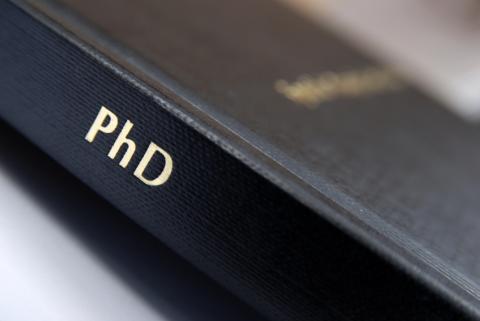GRE. TOEFL. Statement of purpose. I remember staring at these terms when visiting university websites and trying to understand what they meant. After studying at universities in Italy and France, I decided to apply for a PhD programme in the US.
There are useful online resources on how to write successful application essays or how to understand the differences between studying in the US and Europe, but not many discuss the PhD application process. Supervisors and mentors in non-US universities are often not able to offer much support. This guide will help you start your applications, based on my personal experience of applying for a PhD in the US.
Getting your tests: GRE and TOEFL
Applications for a US PhD programme usually require scores from GRE and TOEFL tests, exams that international students might be unfamiliar with. These tests are time-consuming and expensive, so it is important to start planning for them as soon as possible, especially because it can be difficult to find test locations outside the US.
The GRE is a test that every student, American or international, needs to take when applying to join a graduate programme. It has three parts: first is quantitative reasoning, which includes mathematical questions; second is verbal reasoning, which tests the knowledge of English words and can be challenging for international students because it is designed for English native speakers; third is analytical writing, consisting of two short essays where the student needs to critically assess a statement or position. Each university might require different scores for these three parts, and you send the scores automatically after the test to your selected list of universities.
International students also need to take the TOEFL to prove their knowledge of English. Students who come from English-speaking countries or who graduated from English-taught programmes usually do not have to take it, but it is important that you verify this with the universities you want to apply to.
For instance, students from countries where English is one of the official languages (such as India or Kenya) might nonetheless be required to take the TOEFL. Also, the results you submit must be from a test taken within the past two years old.
Each university will have different requirements in terms of the TOEFL score. The TOEFL has four parts (reading, listening, speaking and writing), and even if you are fluent in English it is usually best to get familiar with the format of each part to obtain a score that is high enough for graduate programmes.
Both are computer-based tests done through multiple-choice questions and writing/speaking exercises. Some students choose to hire tutors or attend courses to prepare for the GRE and the TOEFL, but it is possible to study for them individually by buying ETS books with exercises and/or using online resources.
PhD diary: Preparing for a PhD
Is it possible to do a three-year PhD as an international student?
How to decide if a postgraduate degree is right for you
Recommendation letters and transcripts
Applying for a PhD always requires a lot of paperwork, but documents for PhD applications in the US can be difficult to obtain for some international students.
Something quite crucial is the transcript of previous qualifications such as diplomas and degrees. Some universities in non-English countries offer diploma supplements that they send directly to American universities for the application process. In other cases, US universities require a certified translation, which can take time and money. It is important to communicate early and clearly with the universities you want to apply to and also with your home university to make sure it is possible to access all these documents.
Usually, PhD applications also require two or three reference letters. While this is a common practice across the world, US universities often want professors to send or upload them personally, which is not always the case in other countries. Deadlines are often non-negotiable, so I suggest that you identify people who can write reference letters for you and make sure they can do them in English and understand the submission process.
In some cases, you might also need to submit a bank statement. If you apply for programmes that offer full scholarship/funding (which I recommend), this is usually not necessary, but some universities may ask you to submit proof that you can support yourself throughout the programme. This is also required when you apply for a visa if you are not offered a scholarship.
The academic part: statement of purpose and writing samples
You might think that a long and detailed PhD project outline is the most important part of the application. While this is often true in many non-US countries, it is not always the case for US programmes. Instead, you usually have to write a one- or two-page statement of purpose in which you describe why you would fit in a given department.
Applications for US PhDs do not require personal connections with professors, and you do not need to have a supervisor in mind when you apply, but I suggest contacting professors in the department to verify whether your research interests match with theirs. Once accepted to the PhD programme, you will then select a supervisor and start writing your project.
In some cases, applications require a writing sample. Usually, it is advisable to send a university essay or a portion of your thesis. If you did not previously study in a programme taught in English, it is often possible to send a translation of your work or even a sample in another language.
Once all these documents and papers are gathered, you can start your applications. They are usually online, and there may be a fee for each application. It can be a long and expensive process, but many US universities welcome international students and offer an excellent education. In my case, it certainly was worth the effort.

Comments